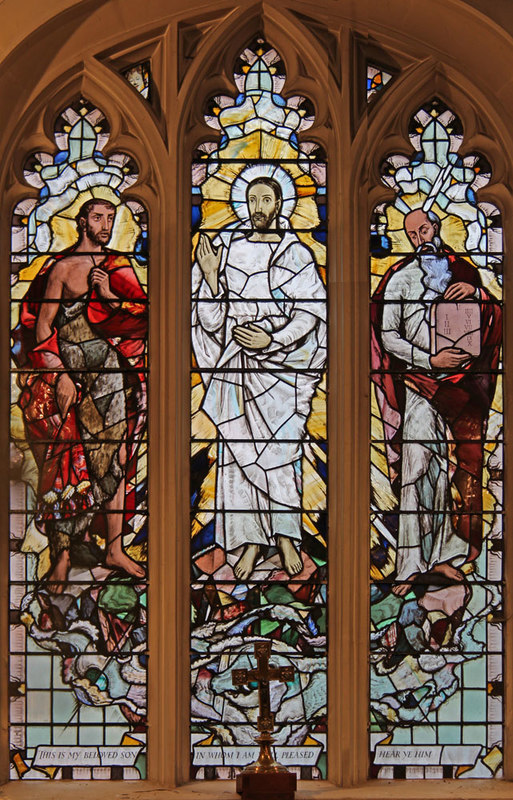
Photograph (c) John Salmon and reused under Creative Commons licence.
Today’s hymn from Sing Praise is “Jesus, restore to us again”. I hadn’t come across this one of Graham Kendrick’s songs before, but it’s in a familiar style. Many of his common themes are here too: restoration, power and signs, the work of the Holy Spirit, all springing from the charismatic movement. But his songs have proved popular even in churches that haven’t experienced charismatic revival.
The first three verses rehearse these familiar themes of incarnation, crucifixion and the power of the Spirit. Verse 4 stands out because of its reference to Moses and Elijah, representing the Law and Prophets that were fulfilled in Jesus. I don’t know whether the song was written specifically for the Feast of the Transfiguration (6 August), though I doubt it, but that’s why I picked it for the eve of that date in the Christian calendar, when we remember that three of Jesus’ disciples witnessed him meeting those ancient saints in glory on the top of a mountain along with the voice of God declaring Jesus to be his son. The verse starts, though, with “Upon the heights of this great land” – asking God to reveal his glory in our time as he did then.
The last verse picks up on the appearance of Moses and Elijah representing the Scriptures (God’s word as received by Moses and proclaimed by the prophets) and God’s power (shown in the ministry of both men as well as that of Jesus). The hymn finishes with “May word and works join hands as one, the word go forth, the Spirit come”, a balance that individuals and churches have to try to achieve.
John is quick to pick up on rhyming or the lack of it in the hymns we’ve been singing, and he no doubt picked up as I did that most of the verses consist of three pairs of rhymed lines (or semi-rhymed: again/name is used twice, and agreed/wed and one/come aren’t really rhyming either). But verse 2 is an exception where the first and fourth lines rhyme and the second and third don’t. I wonder if Kendrick added this verse in or re-wrote it later?
Although I have sung this hymn before, I’ve only sung it very occasionally and am not really familiar with it. My instant reaction is that it’s too long, and that the lack of variation in the tune’s themes doesn’t really support such a long hymn. Perhaps it would go better to a new tune? Perhaps the refrain could do with a rewrite?
I admit to a personal dislike of “near-rhymes” rather than perfect rhymes, and I remember the definition of “assonance” in the film “Educating Rita”: assonance is when the poet get’s the rhyme wrong. The instances Stephen cites grate on me, it’s true: in verse 2 there’s a double fault in that the near-rhymes “stands” and “heaven” (lines 1&2) and “down” and “hands” (lines 3&4) might have been OK if they’d occurred in different verses, but because they are next to each other, the perfect rhyme “stands” and “hands” trumps them and upsets the scheme. A key point of rhyming has to be that the lines which aren’t supposed to rhyme mustn’t! (The writers of Psalm Praise discovered this among their other learning experiences.)
Nevertheless I salute Graham Kendrick for the song – it’s good to have a reminder that as Christians we must *listen* to what Jesus says and not simply be overawed by his glory, and that the scriptures are the way we do this. In the great Reformation trio – by grace alone, in Christ alone, through the scriptures alone – there are many hymns about the first two, and not so many which encapsulate the “sola scriptura” message which was so vital in getting the church back on its gospel track.